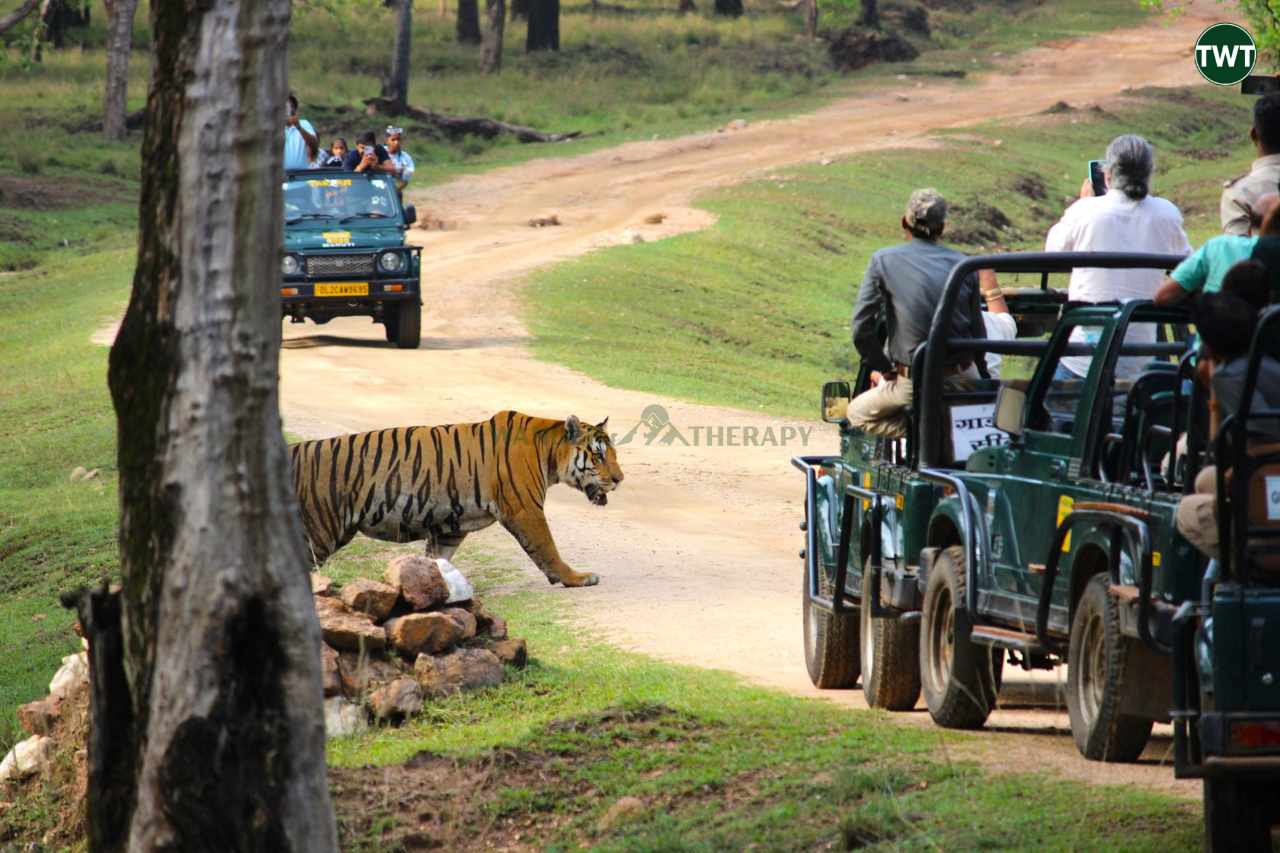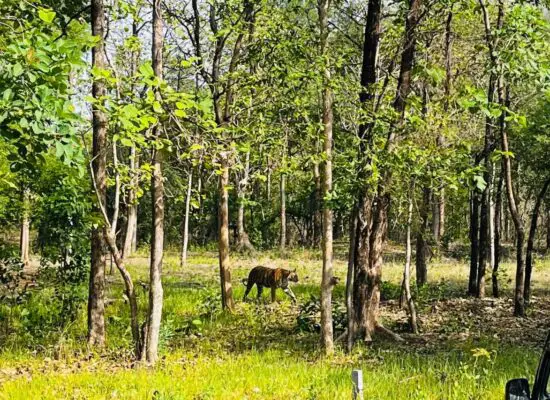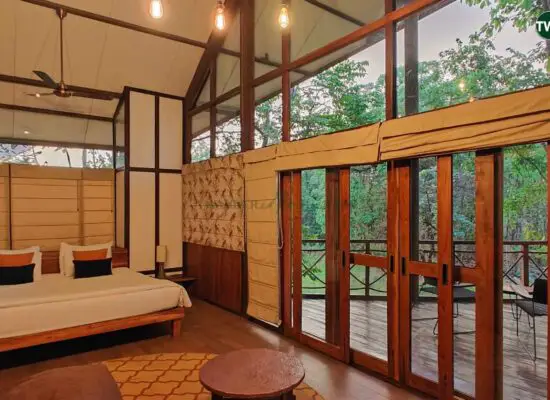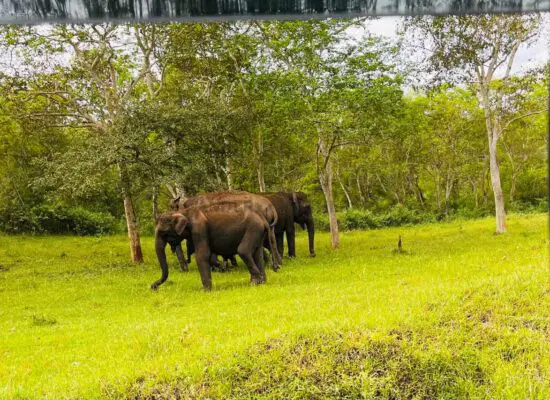Disclaimer: We are serious about content integrity and staying true to our readers. Thus, you can be assured that any article you read across our website is free of bias and is not produced by AI-platforms. Also, this post contains a few affiliate links. If you click on them to make a purchase, we may earn a small commission at no extra cost to you. Read about our editorial policies.
Most often, we see people pondering over whether they are a mountain or beach lover. But then, there is another category of travelers that are ardent wildlife enthusiasts. Give them one chance and they’d dash off to the nearest jungle to relish watching animals and birds in the wilderness. If this sounds like you, you have landed on the right page.
Truth to be told, India is a paradise for all kinds of travelers. However, the jungles of Central India offer an unparalleled treat for birdwatchers and wildlife photographers.
This June, I had the chance to explore Pench National Park (also a tiger reserve), located on the banks of the Pench River and surrounded by the Satpura mountain range of Madhya Pradesh (MP).
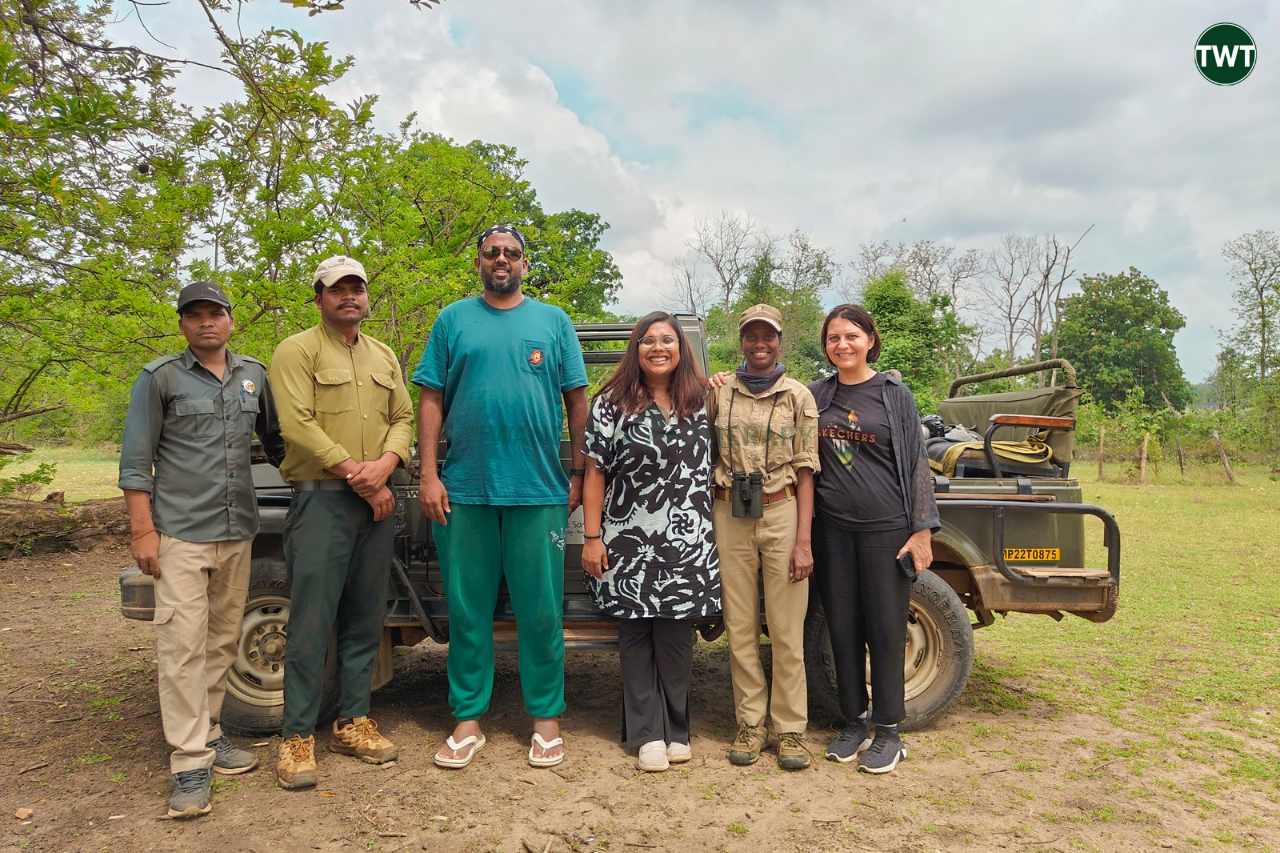
Although less popular than other tiger reserves in MP like Bandhavgarh or Kanha, Pench National Park turned out to be breathtakingly beautiful and special. Because for the first time, it offered me a chance to spot tigers in the wild!
In this article, I’ll take you through the entire safari experience at Pench National Park, sharing information about the best time to visit, best places to stay, safari timings and more. So, let’s begin?
Contents
Best Parts About Pench National Park
- Home to big cats and more than 50 species of animals
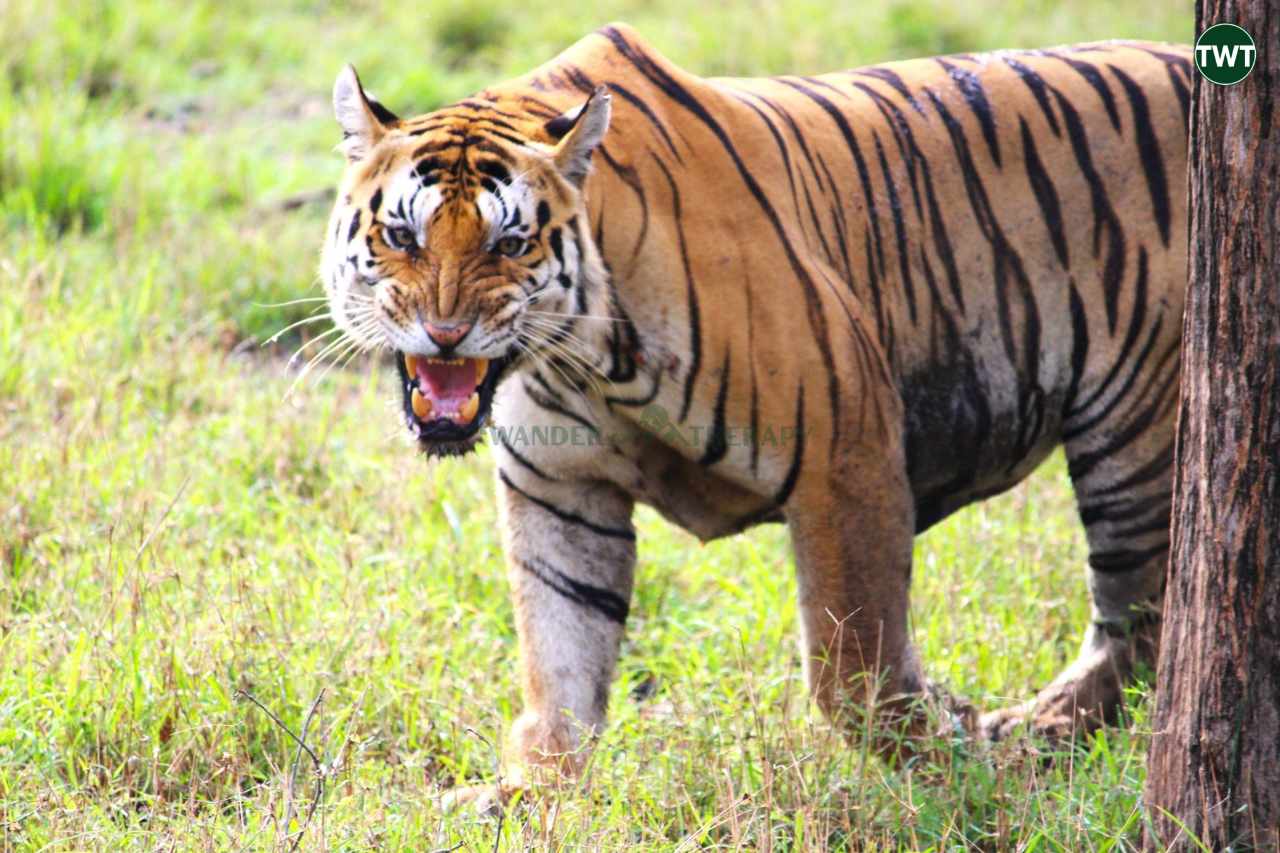
Covering the protected forest areas of Seoni and Chhindwara districts, Pench was declared a sanctuary in 1965 and later raised to the status of a national park in 1983. Finally, in 1992, it was recognized as a tiger reserve.
Home to nearly 80 tigers as per the last census report, they can be found in the core as well as the buffer zones of the reserve. Not just tigers, Pench National Park hosts a rich variety of fauna — from bears to boars, Indian bison and nilgai to leopards, wolves, jackals, and jungle cats. There’s also a large number of spotted deer, barking deer, Indian civets, langurs, and wild dogs (known as ‘dhole’ in the region).
In recent times, a black leopard has also been spotted in the park, which, though rare, is a unique animal.
The list would be endless, as you can also find nearly 33 species of reptiles in Pench National Park, including rock agamas, pythons, monitor lizards, crocodiles, turtles, cobra, viper, as well as 13 species of amphibians.
- Incredibly rich flora and nearly 300 species of birds can be found here
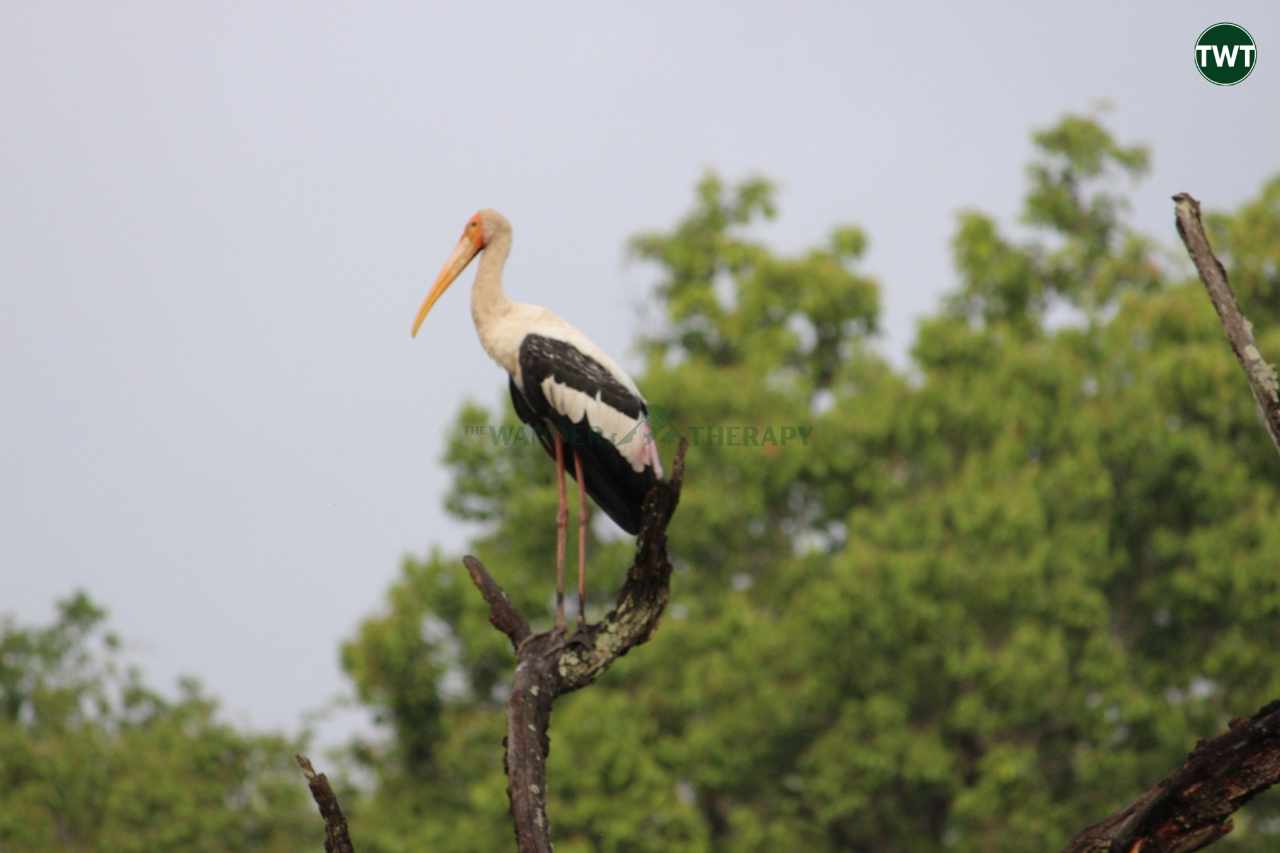
Covering an area of 1,180 sq kilometers, the Pench National Park is home to over 300 species of birds, including the Indian greater coucal, white-eyed buzzard, Malabar-pied hornbills, Indian pitta, fishing eagles, vultures, painted storks and more. Winter gets even better, because that’s when migratory birds also flock in the park.
You can also find more than 1200 species of plants here, including big trees like mahua, teak, amaltas, tendu as well as climbers, shrubs and bushes. Pench is a mixed deciduous forest, which grows really thick and lush during monsoon, and becomes dry during summer.
One of the most unique trees that I spotted here was the ‘Ghost tree‘ – a sleek tall tree with a silver bark, and has been named so, because of its appearance! The white ‘kulu tree’ as it is locally known, looks like a ghost in a white attire at night, and shines bright under moonlight. I was also quite amused to see the ‘crocodile bark tree’ (the Indian Laurel Tree).
- Holds a thrilling literary history that dates back to the times of the Mughal rule
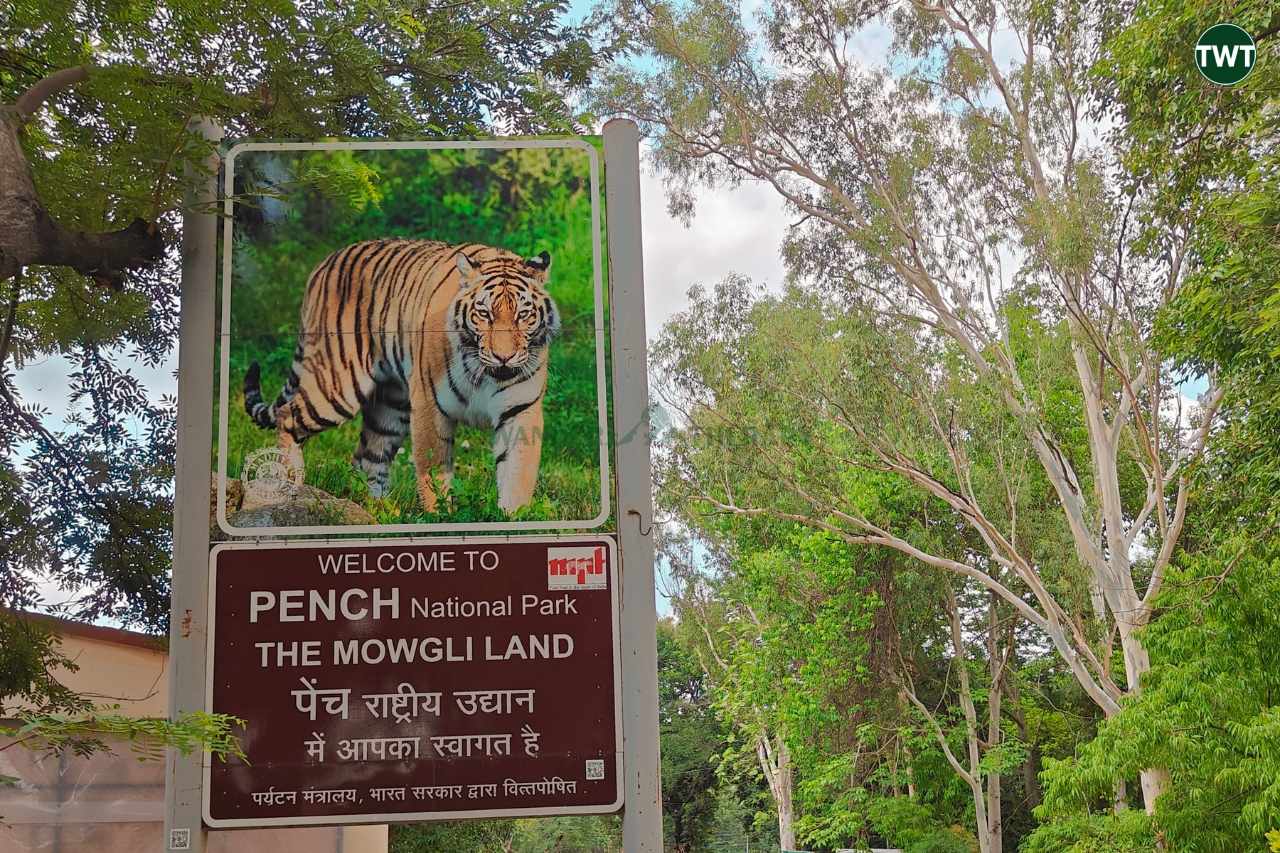
There’s no secret about the fact that Rudyard Kipling’s famous work, ‘The Jungle Book’ was based on Pench. And, the story of Mowgli was immensely inspired by a story narrated by British writer, William Henry Sleeman, where he mentioned about a human boy growing up in a wolves’ den, near Seoni.
Several colonial writers talked about this famous Central Indian jungle in their books and articles, emphasizing on the natural diversity of the terrain.
But that’s not all – in fact, the history of Pench goes back to the 16th century! In ‘Ain-i-Akbari’ – a biography of Emperor Akbar, the author Abul Fazl mentioned about the forested areas of Pench and the richness of natural wealth in the region, which was a part of the Mughal Empire.
Details Of Wildlife Safaris At Pench National Park
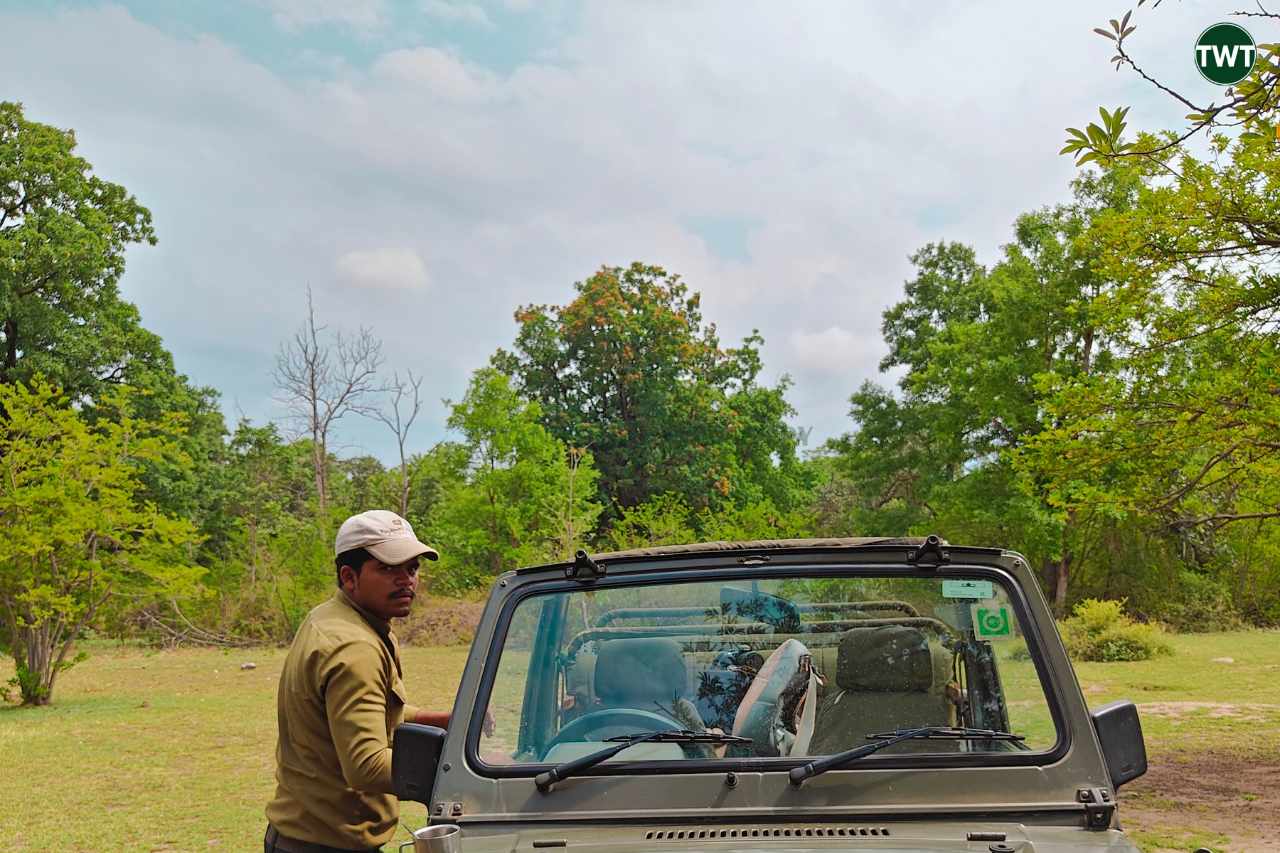
Safari timings: There are morning safaris and evening safaris at Pench National Park, and they vary from season to season.
- From 1st March to 30th June (also the most popular season to spot big cats near water holes), the morning safari happens between 05.30am to 09.30am, while the evening slot is from 03.00pm to 07.00pm.
- Monsoon sets in from July, and the core area of Pench National Park remains closed for three months every year — from 1st July to end of September.
- From 1st October to 28th / 29th February, the safari slots are 06.30am to 10:00am and 02.30pm to 06.00pm. This is the best time to spot migratory birds at Pench.
Safari booking: If you are staying at one of the jungle resorts in Pench, then you can directly book your safari slots with them. Otherwise, you can also book your wildlife safari online and carry your ID card while you go for the game drive.
Vehicle options & entry fee: Only jeep/gypsy safari is available in Pench National Park. You can either book the entire vehicle or go on a sharing basis.The entire jeep would cost around 7,500 INR (for Indians) on weekdays, while the price is 8,500 INR (for Indians) on weekends. If you opt for sharing the vehicle, then it’s 2,000 INR per person (Indians) on weekdays and 2,300 INR per person (Indians) on weekends.
The price is different for foreign tourists who also need to carry their passport as the ID proof. The entire jeep would cost around 12,000 INR on weekdays, while the price is 18,000 INR on weekends for foreigners. If you opt for sharing the vehicle, then it’s 3,000 INR per person on weekdays and 4,000 INR per person on weekends.
Look out for: Tigers, leopards and many more wild animals and birds. It goes without saying, there’s nothing as thrilling as spotting the big cats. However, to quote the naturalist who accompanied me during my safaris, “when you are in the jungle, observing every single life will be unique”. I was actually delighted to see jackals playing and chasing each other, monkeys and spotted deer enjoying meals together, a monitor lizard catching its prey and more.
Reserve your room in Pench on booking.com!
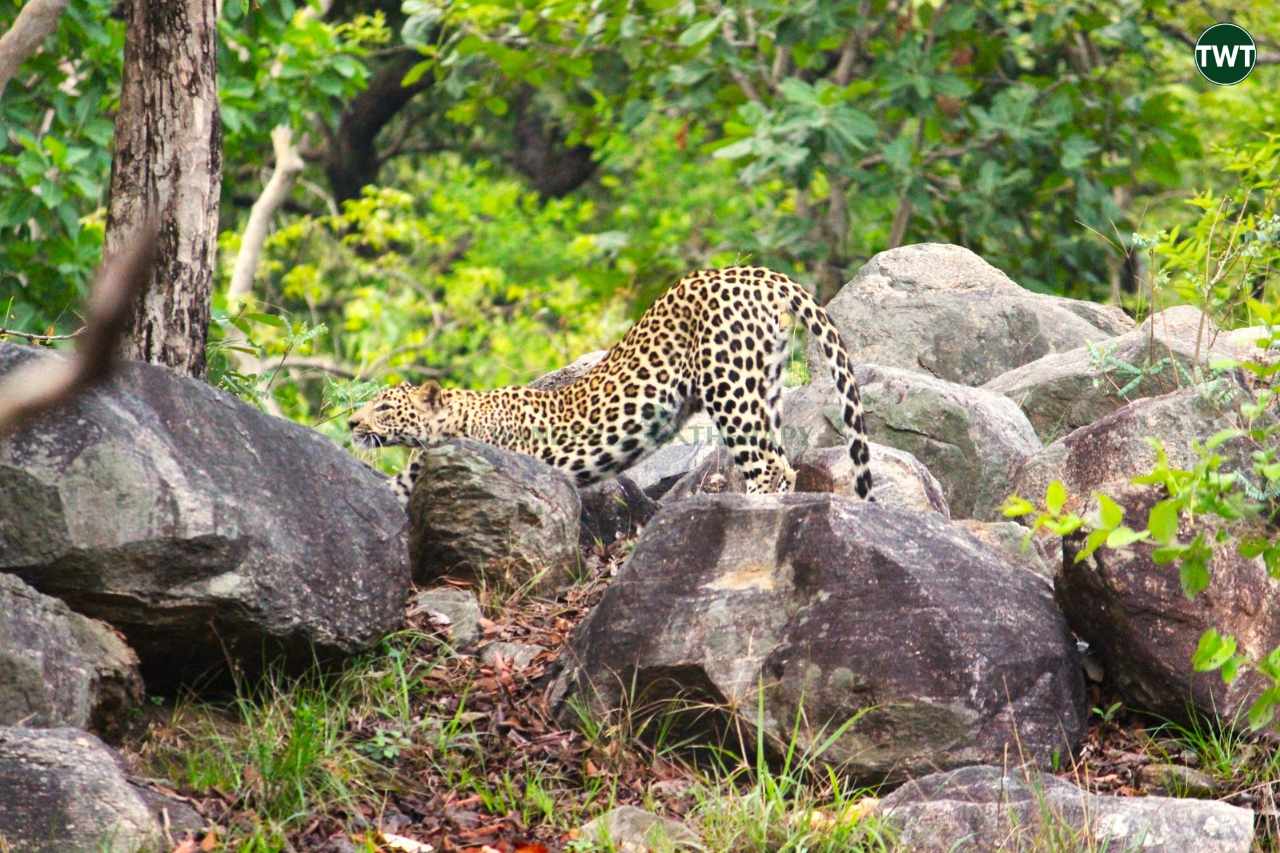
TWT Tip: While you can always go on a jungle safari in Pench National Park with just a guide (who is usually also the person driving your vehicle), I would strongly recommend you to take a naturalist along, for which you will be charged an additional fee. Your experience inside the park will increase manifolds, as the naturalist will be able to tell you about the tiger and leopard territories, about the habits of various animals and birds, etc.
Things To Do In Pench National Park
If you are craving to get closer to nature, spend some days soaking in the bliss of wilderness, or spot wildlife amidst breathtaking landscapes, then Pench National Park is the perfect place for a holiday. But, there’s more to experience here:
1. Go for thrilling wildlife safaris and get a chance to spot tigers, leopards, bison, boards, monkeys, jackals, wolves, etc.
- Enjoy a bush breakfast by the Pench river, inside the national park.
- Try your hands in wildlife photography as well as birding.
- Visit the nearby Gond tribal villages, and shop at the local markets. The Pachdhar village near Seoni has amazing clay potteries that you can shop.
- Visit the Kohka Lake near Pench National Park in Madhya Pradesh, where you can also camp for a night, do stargazing and enjoy a bonfire.
- Go for cycling in the Rukhad Sanctuary, which is also the buffer zone of Pench National Park.
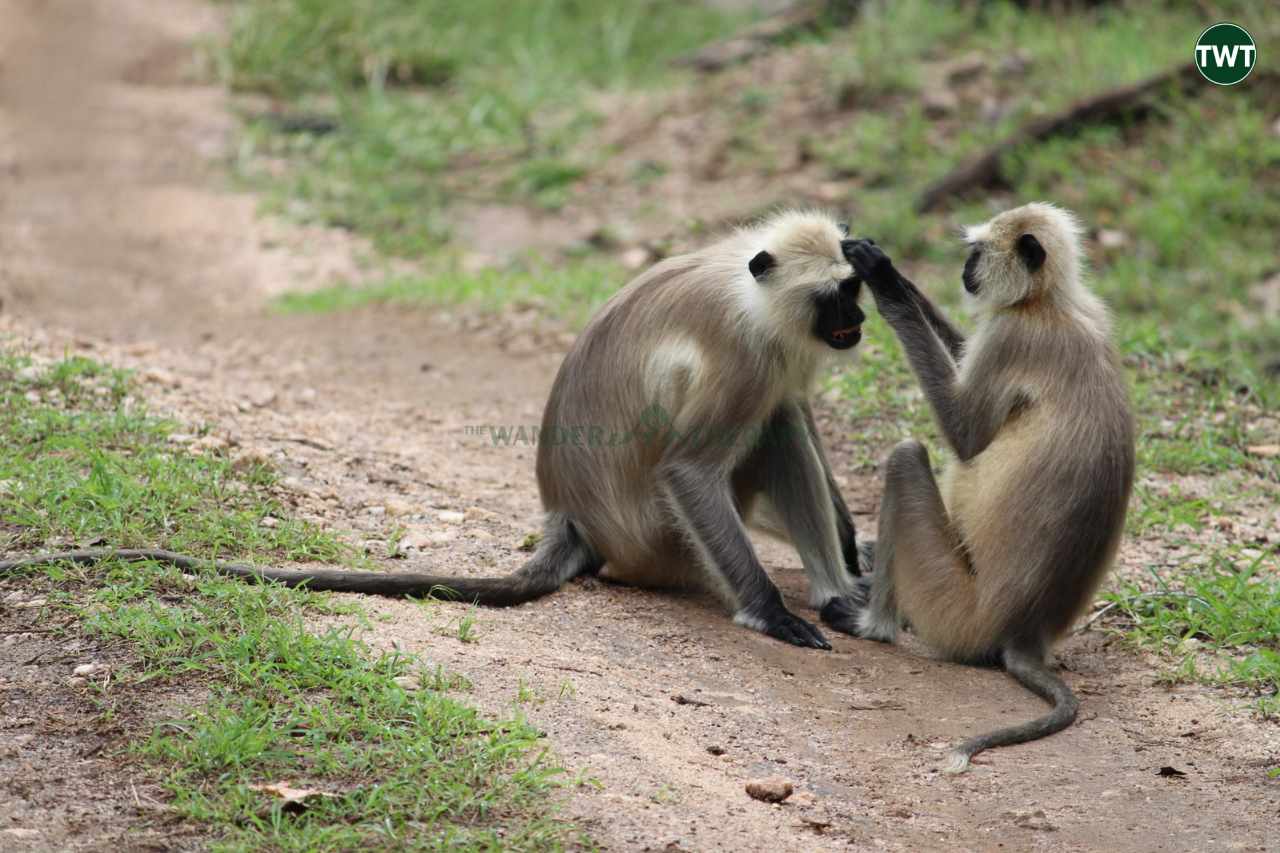
Places To Visit Near Pench National Park
Pench National Park, although in Madhya Pradesh, shares its borders with Maharashtra and forms a popular tiger corridor in the region. Here are some places to visit near Pench National Park, which are equally rich in natural beauty and boosts an abundance of wildlife:
- Kanha National Park
- Tadoba National Park
- Pachmarhi
- Ramtek
- Khekranala
- Bhedaghat
- Nagpur
Location Of Pench National Park & The Best Way To Reach There
Pench National Park is located in the state of Madhya Pradesh, bordering Maharashtra and covers the districts of Seoni and Chhindwara. You can find the location here.
The nearest airport is in Nagpur — Dr. Babasaheb Ambedkar International Airport, from where it’ll take around 2 hours to reach Pench. You can also take a flight to Jabalpur Airport or Khajuraho Airport, and then drive to Pench.
The closest railway station and bus stand are in Seoni, although the frequency of trains is very low. Hence, if you are taking the train, then Nagpur is the best place to alight, and then take a roadtrip to Pench.
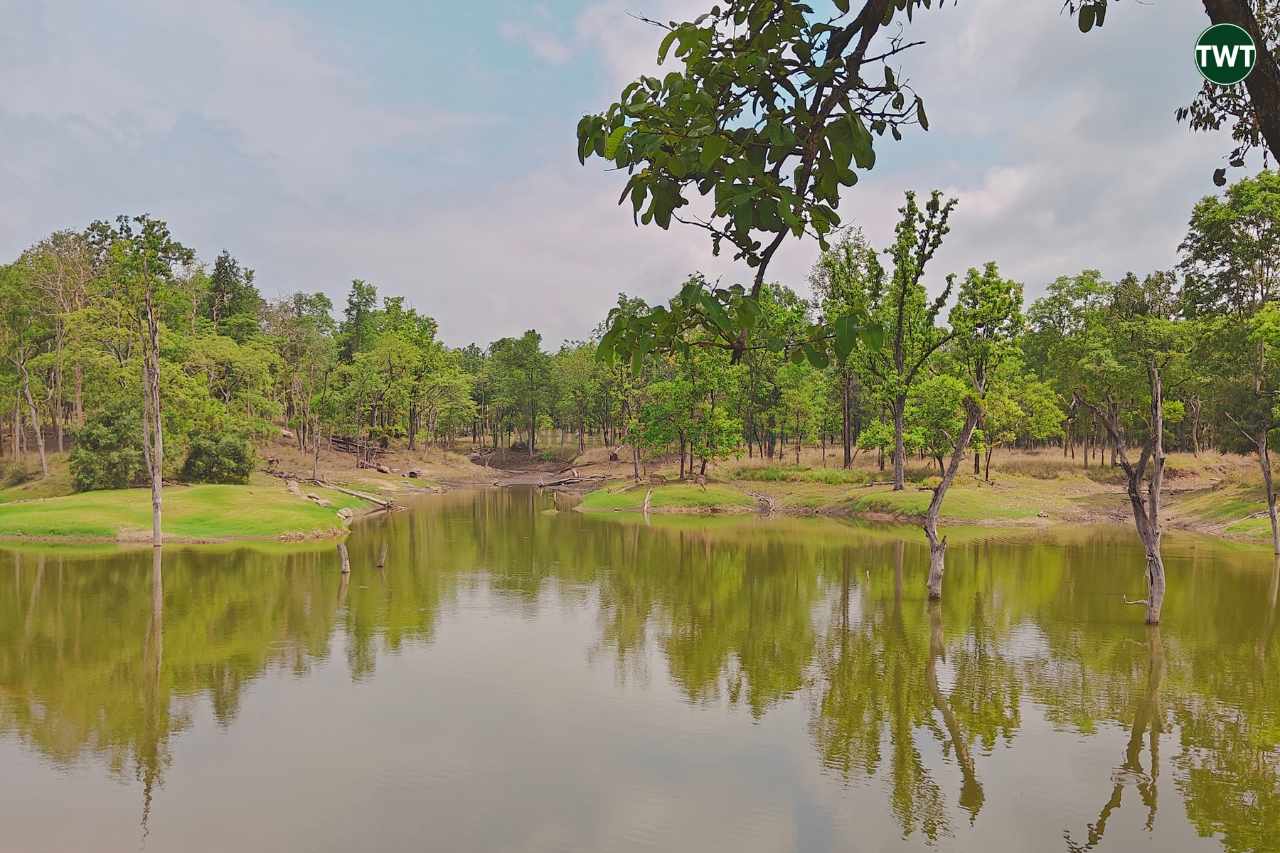
Precautions To Take At Pench National Park
As travelers, it’s our duty (rather responsibility) to be mindful and not cause any damage to mother nature. Also, it’s equally important to check our carbon footprints while traveling. Here are a few things to keep in mind at the tiger reserve:
- During the wildlife safaris, make sure to keep your phone on silent mode.
- Don’t make noise when you spot the animals. If you do, they’ll feel threatened and run away, lowering your chances of witnessing their beauty.
- Don’t play loud music, rather listen to the sounds of nature while at Pench National Park.
- Smoking and alcohol consumption is prohibited inside the park. Please abide by the rules.
- Avoid single-use plastic bottles, instead carry your own bottle of water. Also, don’t throw litter inside the park. Bring your trash back with you.
- Feeding the wild animals is strictly prohibited.
Remember that when you are on a jungle safari, you are actually in the territory of the animals, and the best practice is to respect their space and habitat, and protect it.
Best Time To Visit Pench National Park
March to June (summer season) is the best time to visit Pench National Park, and it’s also the time when the chances to spot big cats is higher. Most animals come towards the water holes during summer. If you are lucky, you might also see a chase or a hunt!
Apart from that, winter is a perfect time for birdwatchers and photographers to visit Pench, as the possibility to see the migratory birds is higher at that time.
Where To Stay In Pench National Park?
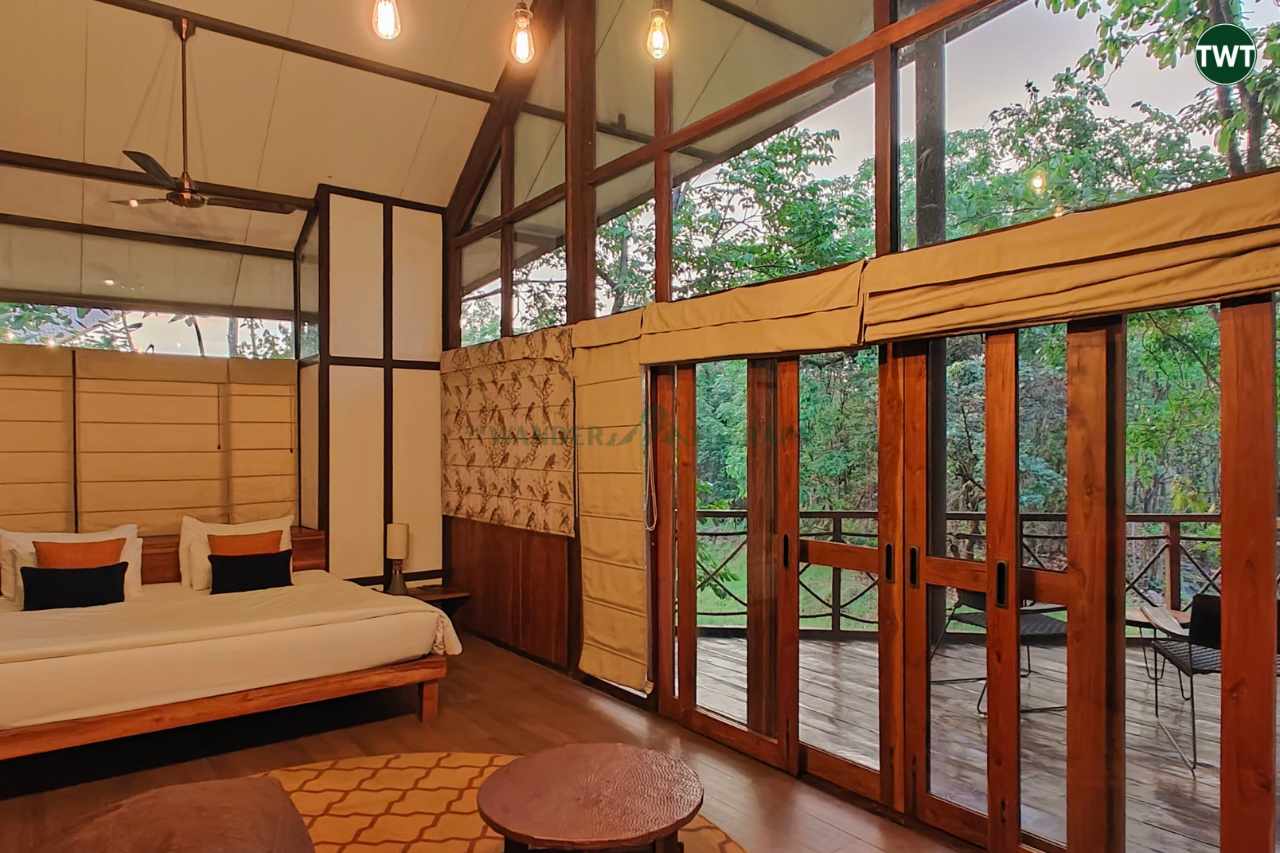
During my trip, I stayed at the Pench Tree Lodge, which is a luxe-eco resort run by Pugdundee Safaris. It’s a sustainable property located close to the Karmajhiri Gate of Pench National Park. They offer gorgeous tree houses as well as cozy cottages.
Other than this, there are several other reputed properties around Pench National Park, which are:
- Jamtara Wilderness Camp
- Baghvan Wildlife Resort – Taj Safaris
- Tuli Tiger Corridor Resort
- Mahua Vann Resort
- La Selva, Pench
- Sterling Padam Pench
Book your stay at one of the top hotels near Pench National Park!
TWT Summary Of Pench National Park
As a wildlife enthusiast, I’ve explored various national parks in India, from Ranthambore in Rajasthan to Hemis in Ladakh and Sundarbans in West Bengal. I also explored the national parks of Sri Lanka, Kenya, and South Africa. But as they say, every jungle is different, and has new stories to tell. My journey in Pench was unique, and never before did I witness a tiger from such close proximity.
I also got to learn a lot about the behavioral patterns of animals. Thanks to the naturalist who accompanied me, I got to know that langurs and spotted deer are ‘best friends in the jungle’, because the langurs can see the predators from tree tops, giving out alarm calls to make the deer aware!
If you are an animal lover, then you’ll absolutely enjoy your time here at Pench National Park.
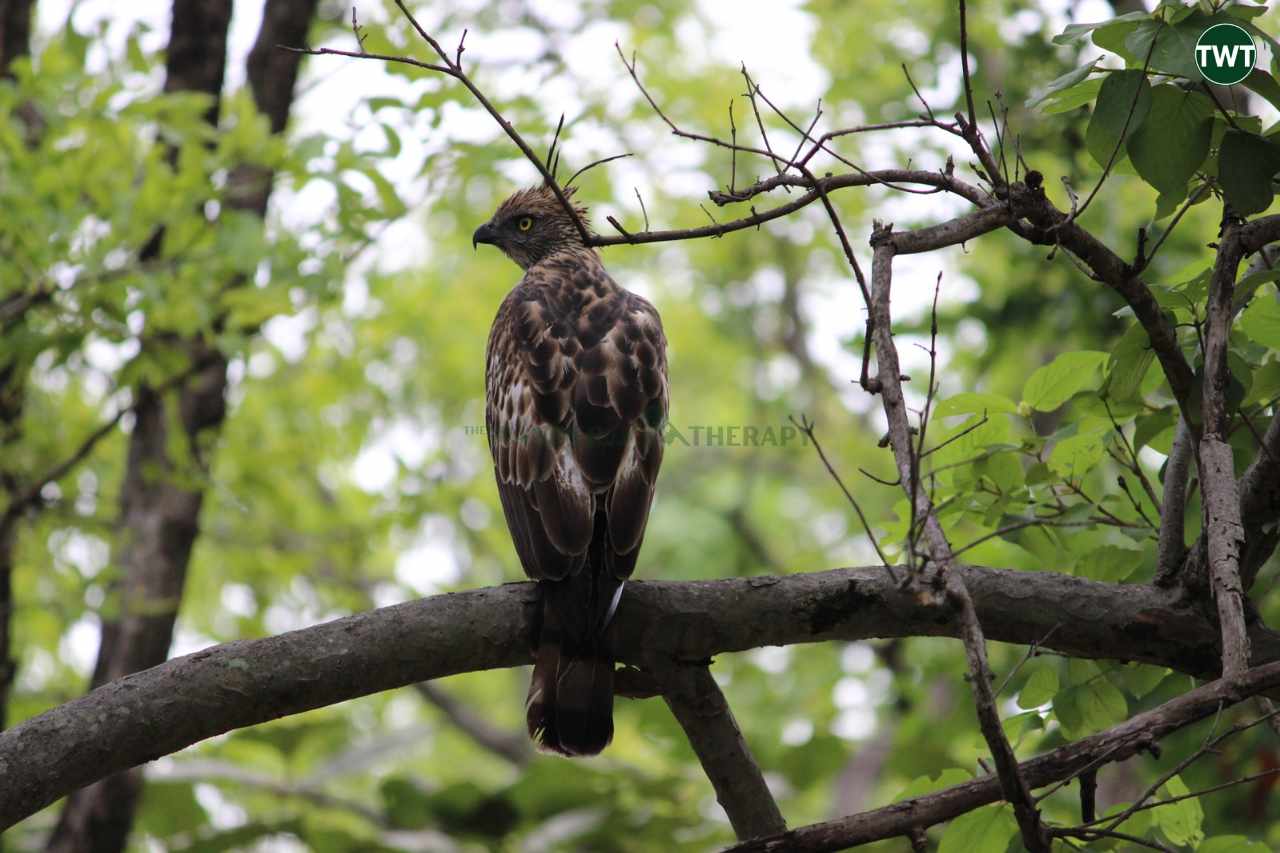
Frequently Asked Questions About Pench National Park
1. Which is the best safari zone in Pench National Park?
There are three main safari zones in the core area of Pench National Park — Turia, Karmajhiri and Jamtara. The Turia Gate is popular among tourists visiting Pench National Park. However, I would highly recommend you to enter through Karmajhiri or Jamtara Gates, as they are less crowded.
Apart from these, the buffer area of Pench National Park also has three zones, namely Telia, Rukhad, Khawasa. You can go for cycling or walking safaris in these areas.
2. What is the best time to visit Pench National Park?
If you wish to spot the big cats, then summer (April to June) is the best time, because that’s when the animals come out in search of water and can be easily spotted. Otherwise, October to March is a good time, when the weather is pleasant for safaris.
During winters (December – January), the chances of spotting birds would be higher. During the monsoon (July to September), the core area remains closed, but the buffer is accessible.
3. What are the chances of spotting big cats in Pench National Park?
Spotting the big cats is a matter of luck, and no matter how good your guide or naturalist is, no one can give you a guarantee to spot the tigers or leopards. So be open and flexible, to enjoy every little thing you see amidst the wilderness. Pench National Park is home to incredible flora and fauna, so you won’t ever return empty handed.
4. Which animals are found in Pench National Park?
Apart from big cats like tigers, leopards (and the rarely seen black leopard), you can spot other animals like wild dogs, civets, hyenas, jackals, foxes, wolves, nilgai, sambar, chital, bisons, wild boars, sloth bears, monkeys, langurs, etc.
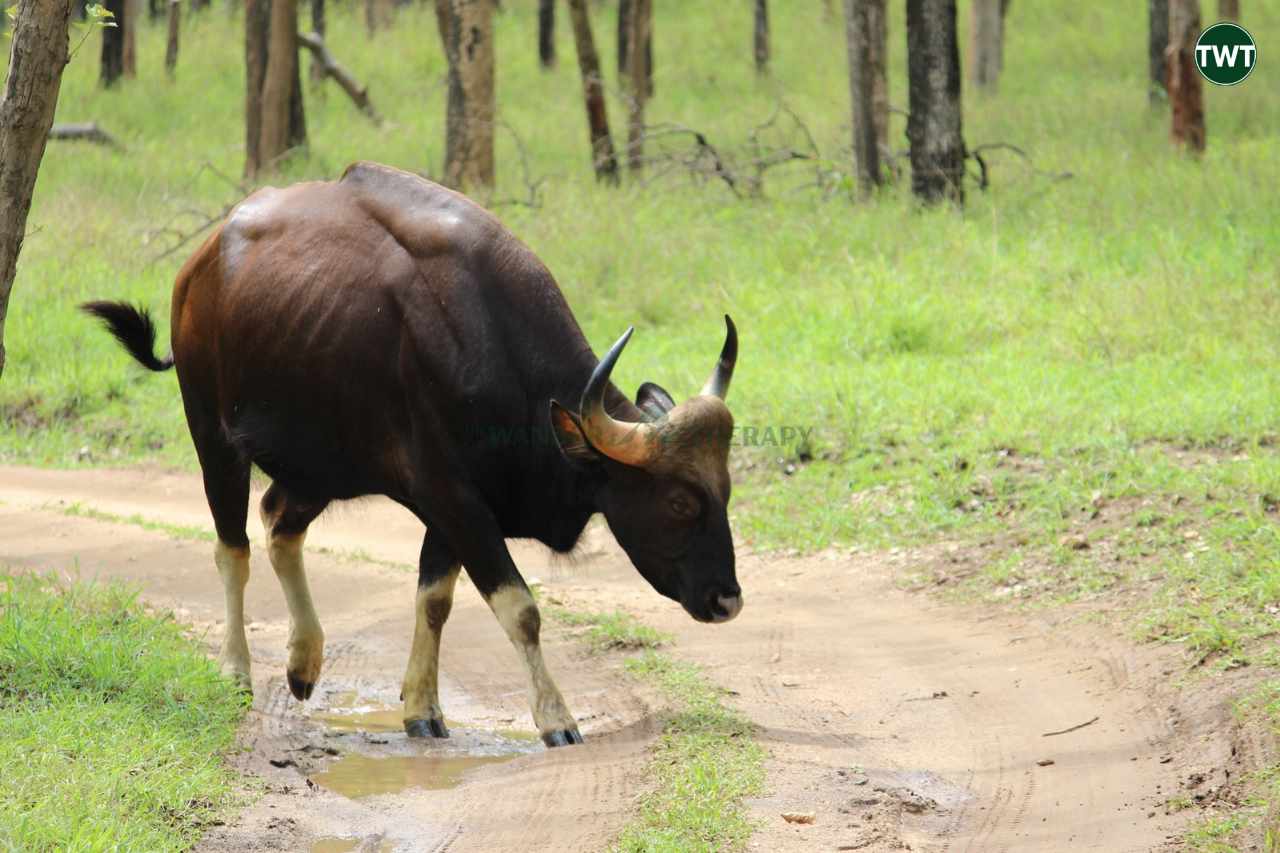
5. Which birds can be seen in Pench National Park?
You’ll get to spot diverse species of birds in Pench, including Indian roller, Indian pitta, greater coucal, wagtail, peacocks, waterfowl, blue kingfisher, hornbills, eagles, vultures, and crimson-breasted barbet.
6. How many days are enough to explore Pench National Park?
Ideally, you should spend 2 nights and 3 days at Pench, which will give you the chance to experience at least 3 wildlife safaris.
Plus, you’ll also get time to relax and soak in the silence that lingers here. Photographers and wildlife enthusiasts can end up spending 6 to 7 days at Pench.
7. Why is Pench National Park famous?
Pench is known for its high density of tiger population. Also, it can’t be denied that Rudyard Kipling’s book had further boosted the popularity of Pench National Park, as The Jungle Book was inspired by this forest.
8. How many tigers are there in Pench National Park?
As per the recent census reports, there are nearly 80 tigers at Pench National Park, and thus, there’s a higher chance to spot them during safaris. The area is also connected to Satpura Tiger Reserve through a corridor, in order to maintain a gene flow and nurture the tiger conservation efforts.
9. How to reach Pench National Park?
The nearest airport is Dr. Babasaheb Ambedkar International Airport in Nagpur, Maharashtra, and the distance is nearly 130 km. Other than that, you can also fly to Jabalpur Airport (approx 160 km) or Khajuraho Airport (approx 225 km) from Pench National Park.
The road connectivity is amazing, and you’ll get to enjoy a nice road trip. If you travel from Nagpur to Pench by road, you’ll cross the famous Kahna-Bandhavgarh-Pench tiger corridor.
You can also take the train to Nagpur Junction, and drive to Pench. Although the closest railway station is in Seoni, the connectivity is not that good.
10. What will be the average cost for two people to explore Pench National Park?
The average cost for two people for 2 nights and 3 days will be approximately 30,000 INR (covering accommodation, food, and safari in a shared vehicle).
View this post on Instagram
Frequent Traveler? Here’S Some More Travel Goodness From Us:
- Tipeshwar Tiger Reserve
- Mudumalai National Park Tamil Nadu
- Mumbai sightseeing guide
- How To Travel With Pet In Train
- Pench Tree Lodge: Eco-Luxe Wildlife Resort

